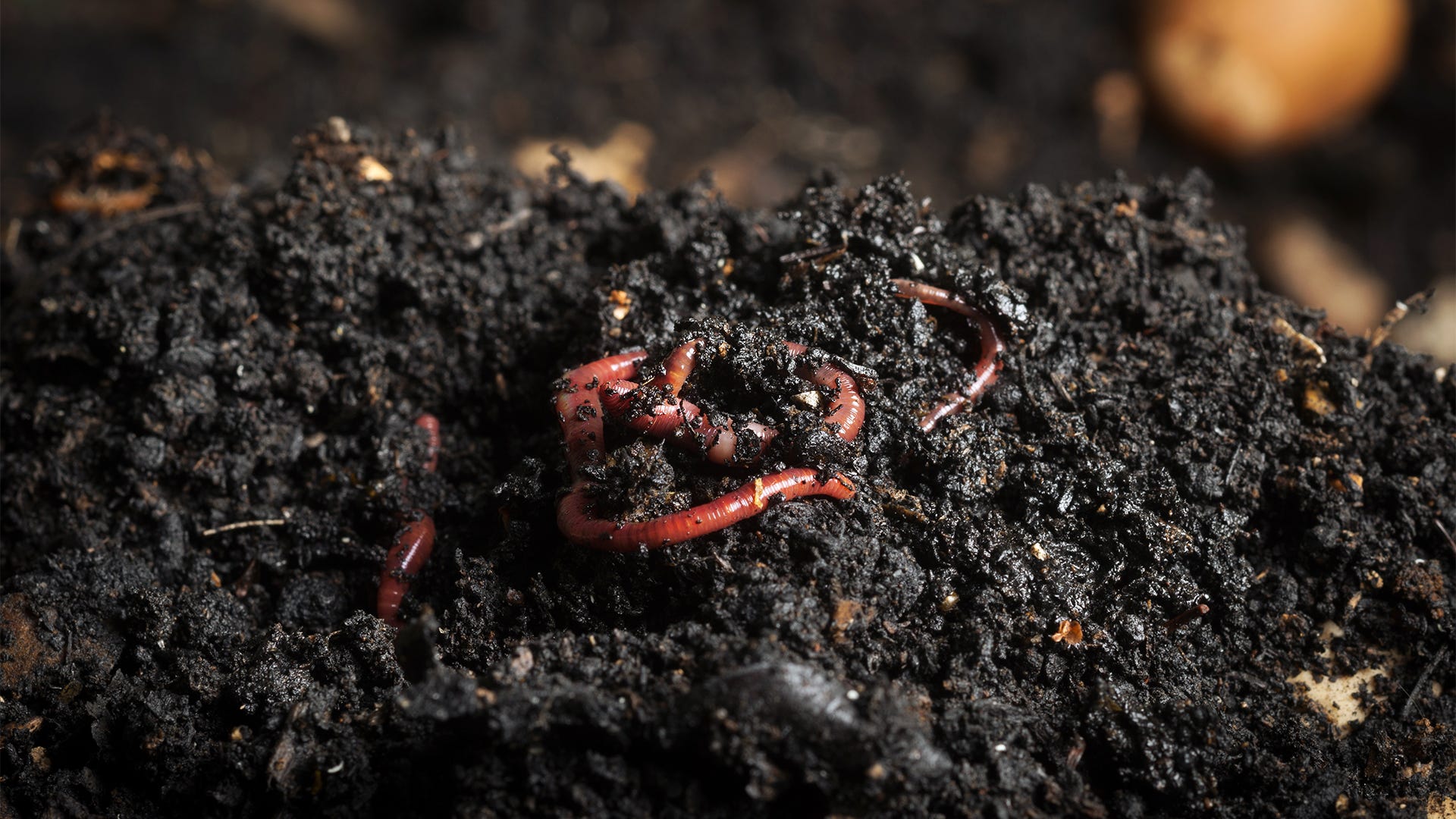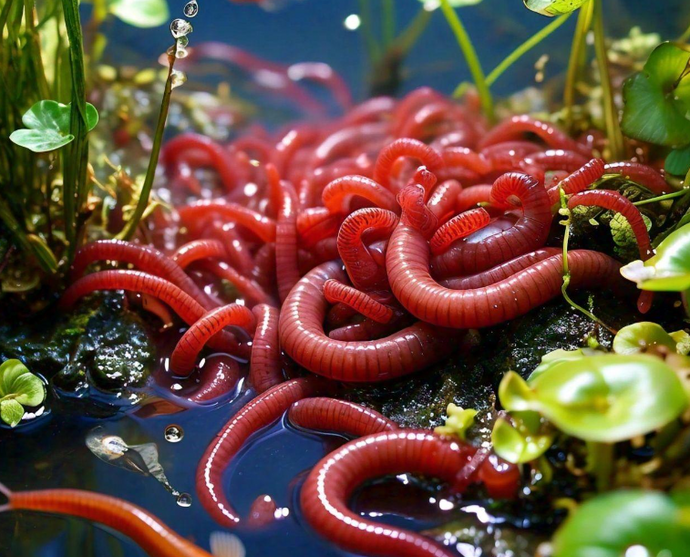Live red worms: Guide to maintaining a worm bin
Exactly How Red Wigglers Can Boost Your Organic Waste Recycling
Red wigglers stand for a pivotal component in improving natural waste recycling, efficiently converting daily kitchen area scraps and yard debris right into useful worm castings. This process not only reduces the volume of waste sent to garbage dumps but additionally improves dirt vitality, promoting much healthier plant development without the need for synthetic plant foods. Recognizing the ins and outs of developing a vermicomposting system and the optimum look after these worms can substantially magnify the advantages. Yet, the concern continues to be: how can one efficiently incorporate this technique into their routine to make best use of effect?

Advantages of Red Wigglers
Red wigglers, a sort of composting earthworm, offer many benefits that make them indispensable in organic waste recycling. Their capacity to take in a wide range of natural materials makes them extremely effective decomposers. These worms can process kitchen area scraps, yard waste, and also paper products, transforming them into nutrient-rich castings. This procedure not just reduces the volume of waste sent out to land fills yet likewise enhances dirt wellness.
Moreover, red wigglers enhance soil oygenation and drainage via their tunneling activities, promoting a much healthier origin setting for plants. Their spreadings are rich in advantageous microbes and necessary nutrients, cultivating robust plant development and improving dirt framework (red wigglers). The usage of red wigglers in composting is an eco friendly alternative to chemical fertilizers, which can have dangerous side effects.
Furthermore, vermicomposting with red wigglers is a low-maintenance and effective technique of reusing organic waste, making it obtainable for homes and neighborhoods alike. Their quick recreation rate makes sure a constant supply for recurring composting initiatives, better magnifying their benefits. Generally, red wigglers act as an essential component in sustainable waste monitoring and soil enhancement techniques.
Establishing a Vermicomposting System
Creating an efficient vermicomposting system needs cautious planning and consideration of numerous variables that add to its success. The structure of a successful system begins with picking a proper bin. Options range from industrial containers to homemade choices, however it is critical that the container is well-ventilated and suitably sized to suit the number of red wigglers.
Next, the option of bed linen product is vital. Appropriate bed linen includes shredded newspaper, cardboard, or coconut coir, which gives both a habitat and a resource of carbon for the worms. The bed linen ought to be dampened but not overly wet to protect against anaerobic conditions.
Keeping the optimal setting is necessary. Red wigglers flourish in temperatures between 55 ° F and 77 ° F(13 ° C to 25 ° C )and need a pH degree around neutral. Checking wetness levels is additionally vital, as also much dampness can result in smell problems, while inadequate can dry the worms.
Finally, positioning the vermicomposting system in a shaded location protected from straight sunlight will assist preserve a stable environment. With these factors to consider in mind, one can effectively establish a prospering vermicomposting system that enhances organic waste recycling.
What to Feed Red Wigglers
Feeding red wigglers the right materials is essential to maintaining a healthy and balanced vermicomposting system. These worms prosper on a varied diet regimen mostly made up of raw material, which includes fruit and vegetable scraps, coffee premises, smashed eggshells, and shredded paper. It is vital to stay clear of feeding them meat, dairy, oily foods, or any processed things, as these can create odors, draw in bugs, and lead to an undesirable atmosphere.
A balanced diet regimen for red wigglers promotes optimum digestion and nutrient production. Go for a mix of environment-friendly materials, high in nitrogen, such as veggie peels and grass cuttings, and brownish materials, rich in carbon, like dried out leaves and cardboard. This equilibrium makes sure a lasting food resource while keeping dampness levels in the worm container.
Moreover, it is advisable to cut or shred larger scraps to speed up decomposition and make the food more available to the worms. Regularly keeping an eye on the intake rate will certainly aid identify the ideal amount to feed, stopping overfeeding and maintaining a prospering community. By giving a suitable diet regimen, you not only sustain the wellness of red wigglers however also improve the efficiency of your vermicomposting initiatives.
Maintaining Your Worm Bin
To guarantee the health and wellness and performance of your vermicomposting system, maintaining your worm container is essential. Normal monitoring of dampness levels is essential; the bedding ought to perspire however not soggy. If it ends up being also wet, excess moisture can lead to anaerobic problems, harming your worms. On the other hand, if it is also dry, worms might end up being non-active or die.
Severe temperature levels can emphasize or eliminate your worms. To achieve this, put your bin in a climate-controlled atmosphere away from direct sunlight or warm sources.
Gently turning the bed linen with a yard fork every couple of weeks will certainly help aerate the material and avoid compaction - red wigglers. If this happens, lower feeding and include even more carbon-rich materials like shredded paper or cardboard.
(Granite Falls Worm Farms)
Utilizing Worm Castings in Horticulture

Worm spreadings, usually referred to as "black gold" by garden enthusiasts, are an extremely nutritious organic plant food that can significantly enhance soil wellness and plant growth. These spreadings are generated by red wigglers as they digest raw material, causing a rich, dark, brittle substance including useful bacteria.
Integrating worm spreadings right into yard soil improves its framework, oygenation, and wetness retention, developing an optimum atmosphere for root growth. The high nutrient material of worm castings, consisting of nitrogen, phosphorus, and potassium, adds to strenuous plant development and enhanced returns. Furthermore, worm castings contain essential trace element and enzymes that promote the overall wellness of plants, enabling them to better stand up to insects and conditions.
Worm spreadings can be used directly to the soil or mixed right into potting mixes for container horticulture. A thin layer spread over yard beds or added to compost stacks can also boost the microbial activity and nutrient account of the compost. As a sustainable and green fertilizer alternative, worm castings sustain organic gardening methods while decreasing dependence on synthetic plant foods, thus promoting a much healthier community.
Verdict
Finally, the assimilation of red wigglers right into natural waste recycling methods offers a practical service for boosting soil health and wellness and advertising sustainable gardening methods. By effectively breaking down kitchen scraps and yard waste, red wigglers add to nutrient-rich worm castings that enhance dirt aeration and wetness retention. This environmentally friendly strategy not only decreases garbage dump payments but additionally lessens the dependence on click for more info chemical fertilizers, eventually cultivating much healthier communities and responsible waste monitoring techniques.